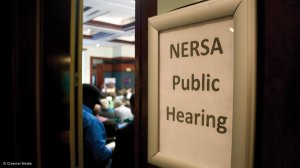The National Energy Regulator of South Africa (Nersa) has published timelines for the processing of Eskom’s retail tariff plan (RTP) application, in which potentially far-reaching changes to the tariff structure are requested.
The timeline deviates slightly from the timelines included in Nersa’s consultation paper release to guide those stakeholders intending to comment on the RTP, which is scheduled for a public hearing for Christmas eve.
The revised schedule released on November 12, indicates that the public hearing will now take place on December 18, which nevertheless also coincides with a period when many South African firms wind down operations and residents begin their summer holidays.
The closing date for the submission of written comments has been set for 16:00 on December 17.
Nersa gave no indication as to the reason for hosting hearings during the period, but indicated that the Energy Regulator was scheduled to approve the RTP by January 30.
By implication, the intention appears to be to have determination in place ahead of the next three-year tariff cycle, which begins on April 1.
Prior to the RTP hearing, Nersa will be conducting nationwide hearings into Eskom sixth multiyear price determination (MYPD6) application, through which the utility is requesting hikes of 36.15%, 11.91% and 9.1% in 2025/6, 2026/7 and 2027/8 respectively.
The MYPD6 hearing are expected to be hotly contested and are scheduled to begin on November 18 at the Cresta Grande hotel in Cape Town and conclude on December 4 at the Eskom Academy of Learning in Midrand.
In a statement release with the RTP schedule, Nersa indicated that Eskom’s application, which was received on September 18, was seeking the following changes to its tariff structures and rates for implementation in 2025/26:
- An update of all tariff charges with costs from the 2024/25 cost-to-serve study with the associated adjustment of time-of-use periods and the further unbundling of energy charges across all tariffs, except the Homelight tariff;
- Rationalisation of municipal tariffs by consolidating the previous 15 tariffs into three, being the Municflex for large power users, Municrate for small power users and Public Lighting for non-metered lighting supplies.
- Raising customer service charges on the number of points of delivery and not per account for large power users;
- Unbundling the Homepower tariff into separate energy, network and retail charges;
- Converting the residential lifeline tariff, Homelight 20A, into a single c/kWh energy rate;
- Making the affordability subsidy charge in the Gen-Wheeling tariff non-creditable; and
- Amending transmission loss factors for generators to reflect the current network configuration.
EMAIL THIS ARTICLE SAVE THIS ARTICLE ARTICLE ENQUIRY
To subscribe email subscriptions@creamermedia.co.za or click here
To advertise email advertising@creamermedia.co.za or click here











